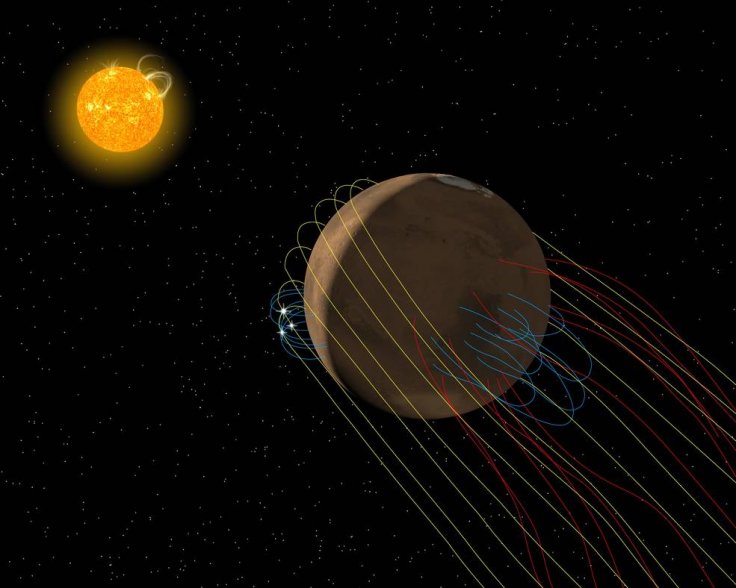
It appears that scientists are receiving new pieces of information about Mars every day. We all know, almost every planet in our solar system has its own quirks. Jupiter has a bunch of moons, Saturn has its rings and Earth, well, humans. But, what about Mars? Recently, it has been discovered that powerful solar eruptions could electrically charge the Martian moon Phobos to hundreds of volts and now, it turns out, that the Red Planet has a twisted tail.
NASA's MAVEN (Mars Atmosphere and Volatile Evolution Mission) spacecraft has just revealed that Mars has a tail, although only you cannot actually see it.
As per a report by NASA, the Red Planet's tail is made up of invisible magnetic forces and it is quite unlike anything that the scientists know of in the Solar System. It differs from both the magnetic fields of Earth, which is a self-generated barrier and the magnetic tail of other planets, like Venus, which have no magnetic fields of their own. Mars' twisted tail is actually a combination of these two.
"We found that Mars' magnetic tail, or magnetotail, is unique in the solar system. It's not like the magnetotail found at Venus, a planet with no magnetic field of its own, nor is it like Earth's, which is surrounded by its own internally generated magnetic field. Instead, it is a hybrid between the two," explained Gina DiBraccio of NASA's Goddard Space Flight Center.
Also Read: Colonizing Mars is like building transcontinental railway, says Elon Musk
As per the report, in a very distant past, Mars might have had a magnetic field similar to that of the Earth. However, that was largely lost. What remains now is just a ghost of its former self, although, it is enough to form the planet's odd tail.
According to the researchers, the magnetic fields carried along by the solar wind, tangle with the thin magnetic field that is still detectable on certain places of the Martian surface and creates this peculiar tail.









